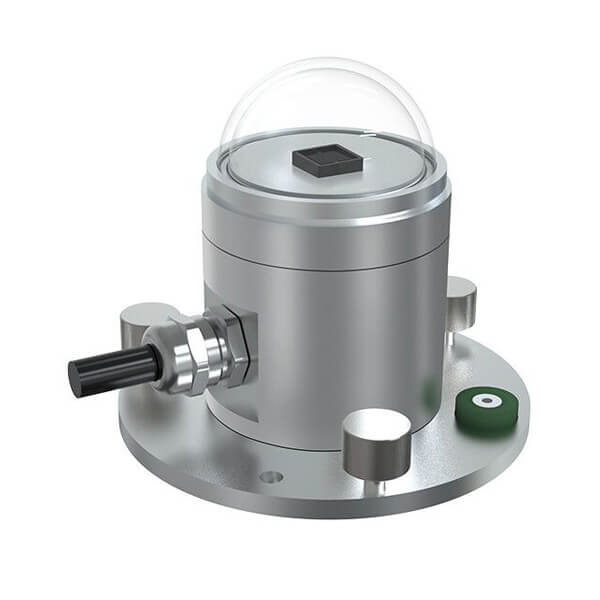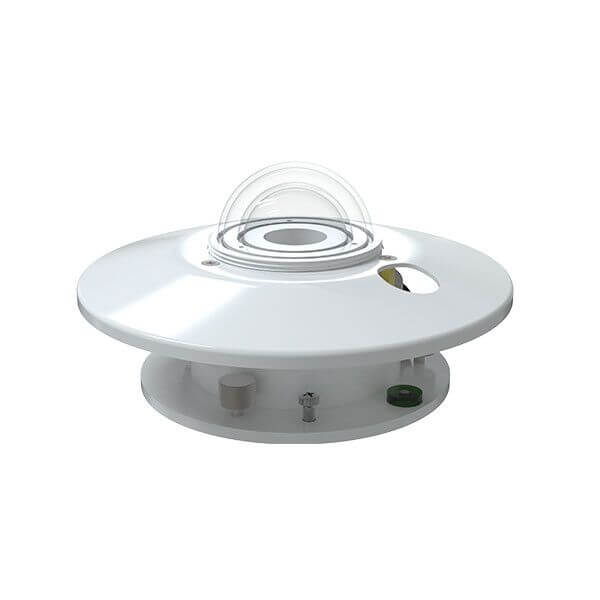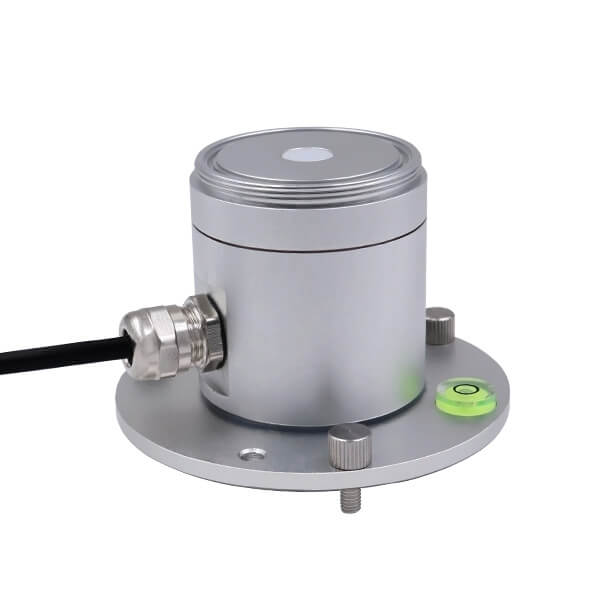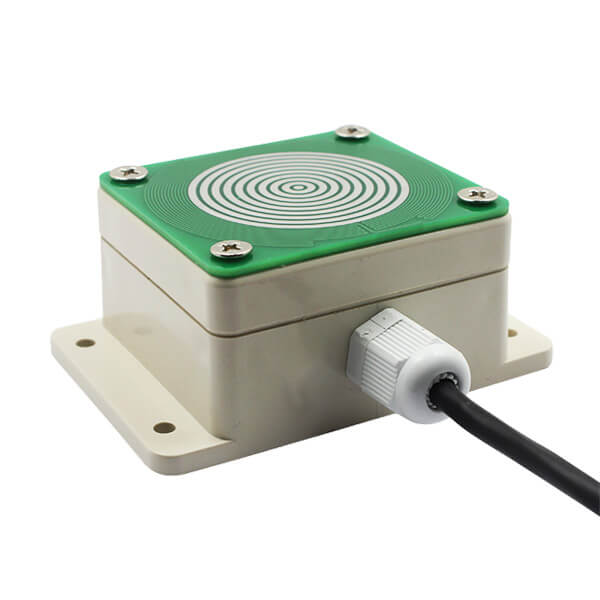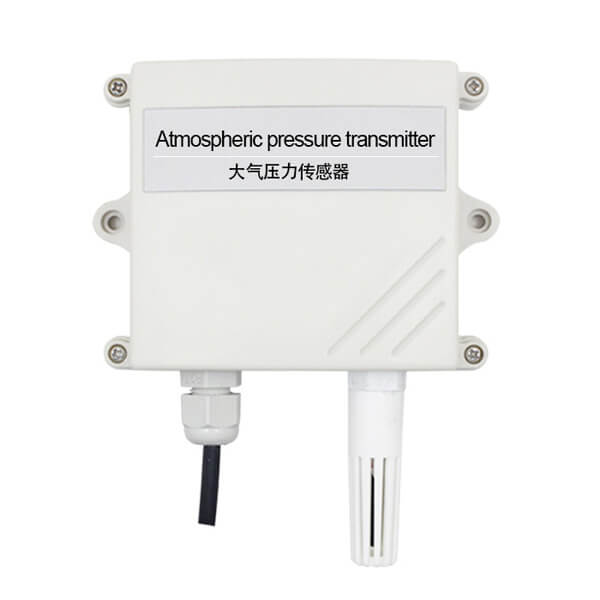The weather sensors are the sensing end of the weather station and collect various weather-related data. The weather station can
UV Sensor
These UV sensors measure the power or intensity of incident ultraviolet (UV) radiation. UV sensors are used for determining exposure to ultraviolet radiation in a laboratory or environmental setting. It can use photosensitive elements to convert ultraviolet signals into measurable electrical signals through photovoltaic mode and light guide mode.
- Model: RS-UV-*-AL-EX
- MOQ: 1 PCS
- Delivery date: within 24 hours
- Price: USD 60
Aluminum UV sensor view
The circuit of our UV sensor adopts the industrial-grade microprocessor chip imported from the United States and the imported high-precision ultraviolet sensor to ensure the excellent reliability and high precision of the product. The product shell has a wall-mounted high-protection shell and aluminum shell for choice, which effectively prevents rain and snow. For outdoor use, we suggest an aluminum UV sensor for you. It is matched with a wind speed sensor, wind direction sensor, solar radiation sensor, rain gauge, solar radiation shield, light sensor, rain and snow sensor, soil sensor, etc. to form a complete weather station monitoring system.
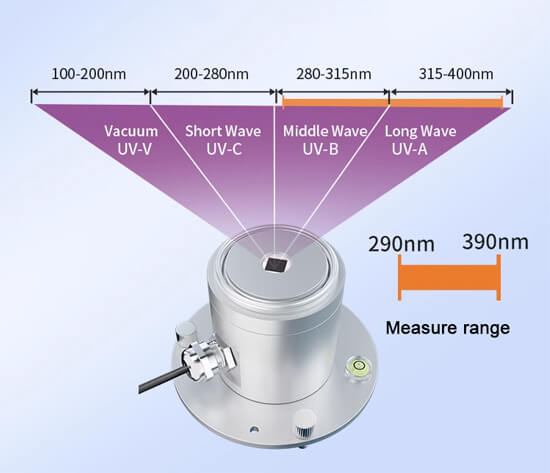
Aluminum UV sensor features
1. The UV measurement range is 290 to 390 nm, covering the solar UV range and the UV output range of electric lamps.
2. Based on the principle that photosensitive elements convert UV rays into measurable electrical signals, online monitoring of UV rays is achieved.
3. Fully enclosed aluminum shell, protection level IP67.
4. Our UV sensor widely used in environmental monitoring, meteorological monitoring, agriculture, forestry and other environments. Measure UV rays in the atmosphere and in environments such as artificial light sources.
Aluminum UV sensor datasheets
| Aluminum shell UV sensor datasheets | ||
|---|---|---|
| Output signal | RS485 | 4-20mA/0-5V/0-10V |
| Max. power consumption | 0.06W | 0.6W |
| Power supply | 10-30VDC | |
| UV intensity range | 0~15 mW/cm2 | |
| Accuracy | ±10% FS (@365nm, 60%RH, 25℃) | |
| Resolution | 0.01 mW/cm2 | |
| Wavelength range | 290-390 nm | |
| Working temperature | -25℃~+60℃ | |
| UV index range | 0-15 | — |
| Linearity | ≤±1% | |
| Annual stability | ≤±3% | |
| Response time | 0.2s | |
How to wire the Aluminum UV sensor?
| Analog UV Sensor Wiring Instructions | ||
|---|---|---|
| Line color | Description | |
| Power supply | Brown | Positive power supply (10~30VDC) |
| Black | Negative power supply | |
| Communication | Blue | Signal positive |
| Yellow (green) | Signal negative | |

Calculation method
1. Current output signal conversion calculation
Ultraviolet intensity range 0-15 mW/cm2, 4~20mA output, when the output signal is 12mA, calculate the current ultraviolet intensity value. The span of this ultraviolet intensity range is 15 mW/cm2, expressed by 16mA current signal, 15/16=0.9375, that is, the current 1mA represents the ultraviolet intensity change of 0.9375 mW/cm2, the measured value is 12mA-4mA=8mA, 8*0.9375=7.5 mW/cm2, and the current ultraviolet intensity is 7.5 mW/cm2.
2. Voltage output signal conversion calculation
Ultraviolet intensity range 0-15 mW/cm2, 0-10V output, when the output signal is 5V, calculate the current ultraviolet intensity value. The span of the UV intensity range is 0-15 mW/cm2, expressed by a 10V voltage signal, 15/10=1.5, that is, a voltage of 1V represents a change of 1.5 mW/cm2 in UV intensity, and the measured value is 5V-0V=5V, 5*1.5 =7.5 mW/cm2, and the current UV intensity is 7.5 mW/cm2.
| RS485 UV Sensor Wiring Instructions | ||
|---|---|---|
| Line color | Description | |
| Power supply | Brown | Power supply positive (10~30VDC) |
| Black | Power supply negative | |
| Communications | Yellow (green) | 485-A |
| Blue | 485-B | |

Register address
You can use 03/04 to read the function code and 06/10 to write the function code
| Register address | PLC or configuration address | Content | Operation | Definition description |
|---|---|---|---|---|
| 0000 H | 40001 | UV intensity | Read only | 100 times the actual value |
| 0001 H | 40002 | UV index | Read only | Uploaded data is actual value |
| 0052H | 40083 | UV intensity deviation value | Read and write | 100 times the actual value |
| 07D0 H | 42001 | Device address | Read and write | (1~254) Factory default 1 |
| 07D1H | 42002 | Device baud rate | Read and write | 00 represents 2400 01 represents 4800 02 represents 9600 |
Communication protocol examples and explanations
| Read the UV intensity value of device address 0x01 | |||||
|---|---|---|---|---|---|
| Inquiry frame: Read value function code 03/04 | |||||
| Address code | Function code | Start address | Data length | Check code low bit | Check code high bit |
| 0x01 | 0x03 | 0x00 0x00 | 0x00 0x01 | 0x84 | 0x0A |
| Ultraviolet intensity: | |||||
| Address code | Function code | Return valid bytes | Data area | Checksum low bit | Checksum high bit |
| 0x01 | 0x03 | 0x02 | 0x01 0x43 | 0xF8 | 0x25 |
| UV intensity: | |||||
| 0143 (hexadecimal) = 323 => UV intensity = 3.23mW/cm2 | |||||
| Read the UV index value of device address 0x01 | |||||
|---|---|---|---|---|---|
| Inquiry frame (single UV device reads register 01) | |||||
| Address code | Function code | Start address | Data length | Check code low bit | Check code high bit |
| 0x01 | 0x03 | 0x00 0x01 | 0x00 0x01 | 0x74 | 0x0A |
| Response frame (e.g. UV index is 3) | |||||
| Address code | Function code | Return valid bytes | Data area | Checksum low bit | Checksum high bit |
| 0x01 | 0x03 | 0x02 | 0x00 0x03 | 0xF8 | 0x45 |
| UV index: | |||||
| 0003 (hexadecimal) = 3 => UV index = 3 | |||||
Wall mounted UV sensor view
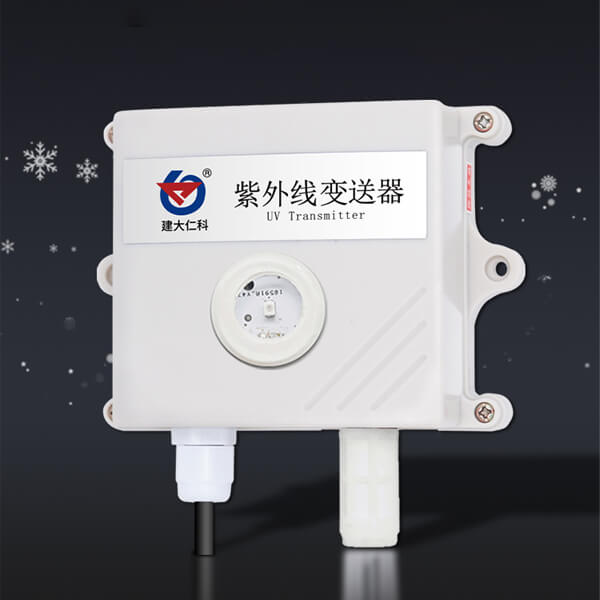
Wall mounted UV sensor features
1. The UV measurement range is 240-370 nm, which is suitable for accurate measurement of outdoor lighting and indoor light sources.
2. The perspective window is made of high-quality light-transmitting materials with a UV transmittance of more than 98%, avoiding the problem of low UV measurement values caused by the absorption of UV rays by traditional PMMA and PC materials.
3. The wall-mounted waterproof shell has a protection level of IP65 and can be used for long-term outdoor rain and snow environments.
4. RS485/4-20mA/0-10V/0-5V multiple output signals are available.
5. Temperature and humidity sensors can be integrated to monitor UV, temperature and humidity at the same time.
Wall mounted UV sensor datasheets
| Wall mounted UV sensor datasheets | ||
|---|---|---|
| Output signal | RS485 | 4-20mA/0-5V/0-10V |
| Max. power consumption | 0.1W | 1.2W |
| Power supply | 10-30VDC | |
| UV intensity range | 0~15 mW/cm2 or 0~ 450 μW/cm2 | |
| Accuracy | ±10% FS(@365nm,60%RH,25℃) | |
| Resolution | 0.01 mW/cm2 or 1μW/cm2 | |
| Wavelength range | 240-370 nm | |
| Working temperature | -40℃~+60℃, 0%RH~95%RH (non-condensing) | |
| UV index range | 0-15 | — |
| Response time | 0.2s | |
How to wire the Wall mounted UV sensor?
| Analog UV Sensor Wiring Instructions | ||
|---|---|---|
| Line color | Description | |
| Power supply | Brown | Positive power supply (10~30VDC) |
| Black | Negative power supply | |
| Communication | Blue | Signal positive |
| Yellow (green) | Signal negative | |
Calculation method
1. Current output signal conversion calculation
Ultraviolet intensity range 0-15 mW/cm2, 4~20mA output, when the output signal is 12mA, calculate the current ultraviolet intensity value. The span of this ultraviolet intensity range is 15 mW/cm2, expressed by 16mA current signal, 15/16=0.9375, that is, the current 1mA represents a change of 0.9375 mW/cm2 in ultraviolet intensity, the measured value is 12mA-4mA=8mA, 8*0.9375=7.5 mW/cm2
, the current ultraviolet intensity is 7.5 mW/cm2.
2. Voltage output signal conversion calculation
Ultraviolet intensity range 0-15 mW/cm2, 0-10V output, when the output signal is 5V, calculate the current ultraviolet intensity value. The span of the UV intensity range is 0-15 mW/cm2, expressed by a 10V voltage signal, 15/10=1.5, that is, a voltage of 1V represents a change of 1.5 mW/cm2 in UV intensity, and the measured value is 5V-0V=5V, 5*1.5 =7.5 mW/cm2, and the current UV intensity is 7.5 mW/cm2.
| RS485 UV Sensor Wiring Instructions | ||
|---|---|---|
| Line color | Description | |
| Power supply | Brown | Power supply positive (10~30VDC) |
| Black | Power supply negative | |
| Communications | Yellow (green) | 485-A |
| Blue | 485-B | |
Register address
Single UV Sensor
| Register address | PLC or configuration address | Content | Operation | Definition description |
|---|---|---|---|---|
| 0000 H | 40001 | UV intensity | Read only | When the range is 0~15 mW/cm2, the uploaded data is 100 times the actual value |
| When the range is 0-450 μW/cm2, the uploaded data is the actual value | ||||
| 0001 H | 40002 | UV index | Read only | Uploaded data is actual value |
| 07D0 H | 42001 | Device address | Read and write | (1~254) Factory default 1 |
| 07D1H | 42002 | Device baud rate | Read and write | 00 represents 2400 01 represents 4800 02 represents 9600 |
Communication protocol examples and explanations
| Read the UV intensity value of device address 0x01 | |||||
|---|---|---|---|---|---|
| Inquiry frame (single UV device reads register 00, three-in-one device reads register 02) | |||||
| Address code | Function code | Start address | Data length | Check code low bit | Check code high bit |
| 0x01 | 0x03 | 0x00 0x02 | 0x00 0x01 | 0x25 | 0xCA |
| Response frame (when the range is 0~15 mW/cm2, for example, the UV intensity is 5.26 mW/cm2) | |||||
| Address code | Function code | Return valid bytes | Data area | Checksum low bit | Checksum high bit |
| 0x01 | 0x03 | 0x02 | 0x02 0x0E | 0x38 | 0xE0 |
| UV intensity: | |||||
| 020E (hexadecimal) = 526=>UV intensity = 5.26 mW/cm2 | |||||
| Response frame (when the range is 0-450 μW/cm2, for example, the UV intensity is 323μW/cm2) | |||||
| Address code | Function code | Return valid bytes | Data area | Check code low bit | Check code high bit |
| 0x01 | 0x03 | 0x02 | 0x01 0x43 | 0xF8 | 0x25 |
| UV intensity: | |||||
| 0143 (hexadecimal) = 323=> UV intensity = 323μW/cm2 | |||||
| Read the UV index value of device address 0x01 | |||||
|---|---|---|---|---|---|
| Inquiry frame (single UV device reads register 01, three-in-one device reads register 03) | |||||
| Address code | Function code | Start address | Data length | Check code low bit | Check code high bit |
| 0x01 | 0x03 | 0x00 0x03 | 0x00 0x01 | 0x74 | 0x0A |
| Response frame (e.g. UV index is 3) | |||||
| Address code | Function code | Return valid bytes | Data area | Checksum low bit | Checksum high bit |
| 0x01 | 0x03 | 0x02 | 0x00 0x03 | 0xF8 | 0x45 |
| UV index: | |||||
| 0003 (hexadecimal) = 3 => UV index = 3 | |||||
UV sensor FAQs
What is ultraviolet light?
Ultraviolet light refers to the wavelength of 10nm-400nm in the electromagnetic spectrum, which cannot be detected by the naked eye. Ultraviolet rays are divided into three categories: UVA, UVB, and UVC according to the band:
1. UVA has strong penetrability of long-wave ultraviolet rays, with a wavelength of 315 nm-400 nm. It can destroy elastic fibers and collagen fibers and can make the skin tan.
2. UVB is a medium-wave ultraviolet that has an erythema effect and can promote mineral metabolism and the formation of vitamin D in the body. The wavelength is 280 nm-320 nm, but long-term exposure is not recommended because it will suntan the skin and cause erythema peeling.
3. UVC is a short-wave ultraviolet light that has a sterilizing effect. The wavelength is 200 nm-280 nm. The UVC band is very harmful to the human body. Short-term exposure can burn the skin. If it is exposed for a long time, it will cause skin cancer.
Is this UV ray sensor waterproof?
When used in a normal environment, our company provides a two-year warranty.
How long is the warranty of this sensor?
Lorem Ipsum is simply dummy text of the printing and typesetting industry. Lorem Ipsum has been the industry’s standard.
Where to use ultraviolet rays sensor?
Ultraviolet rays sensors can be used in many different applications. For example, it is used in environmental monitoring, weather monitoring, agriculture, forestry, and other environments. Measure ultraviolet rays in the atmosphere and under artificial light sources. In addition, UV sensors are also used in the chemical industry for the production, storage, and transportation of chemicals.
The UV sensor is available in different appearances according to different places of use. For details, you can consult our professional technicians to provide you with the best solution.
How to measure UV?
The UV sensor designed and developed by our company can accurately measure the UV conditions in the environment, and display the value in real-time or upload the value to a free cloud platform.
Where to download the UV sensor manual?
In order to protect the patented technical parameters, please contact us for a manual.
Related blogs
A greenhouse is a closed environment that provides optimal conditions for plant growth and promotes plant growth by controlling indoor
Table of Contents What is IoT? IoT is the “Internet of things“. It is an extended and expanded network based
What is smart farming? Smart farming is the application of Internet of Things technology to traditional agriculture, using sensors and
The weather station can provide users with comprehensive weather information over the years. Regular maintenance of weather stations is an
what is a weather station? the weather station also called a weather center, is a device that relies on a
A complete set of a weather station is composed of two parts: hardware and software. The hardware part includes various
Table of Contents Do you know where to mount weather station? The weather station should be installed as far as
It is widely known that ultraviolet (UV) radiation is prevalent in the natural environment, primarily originating from solar. While most


